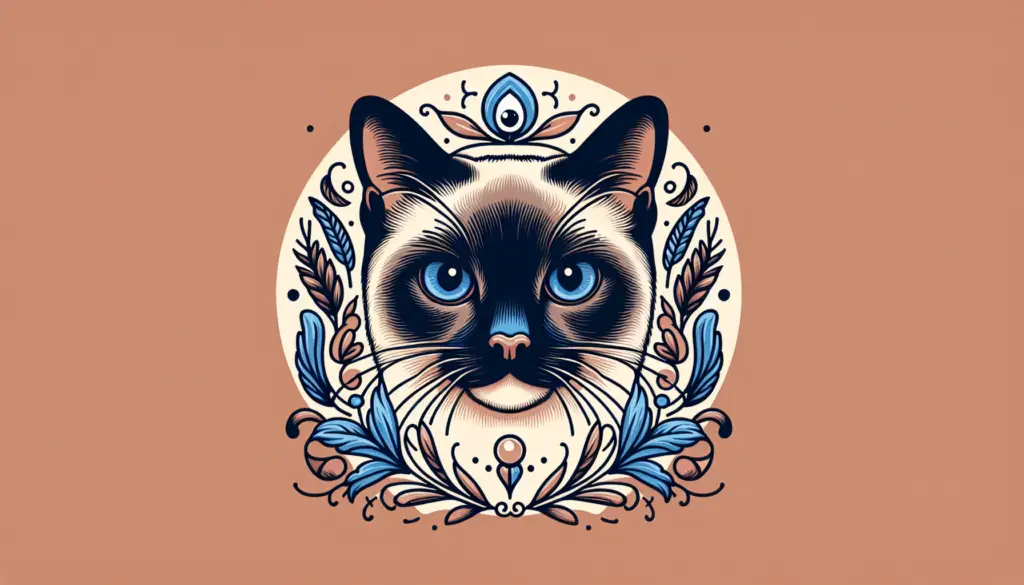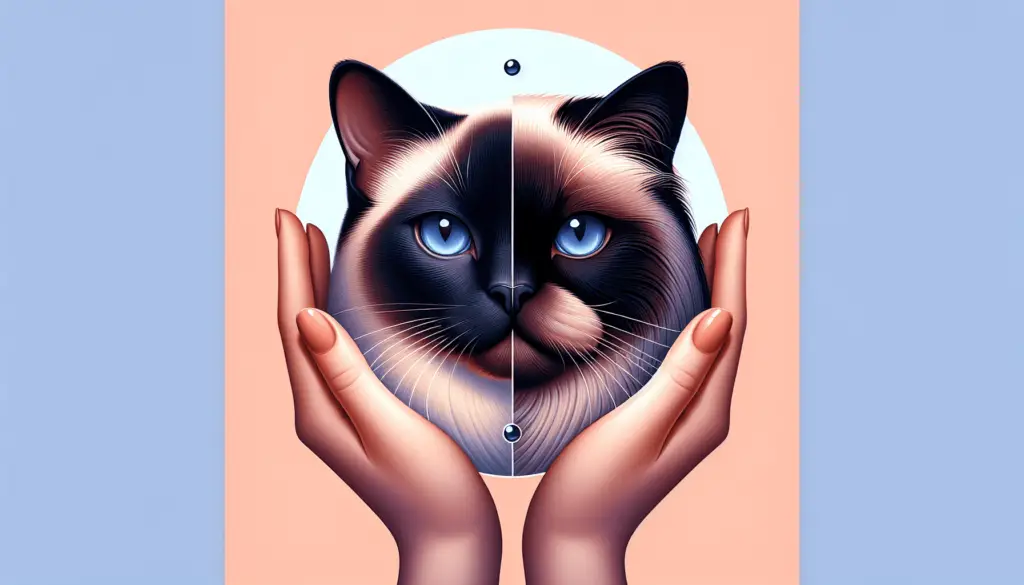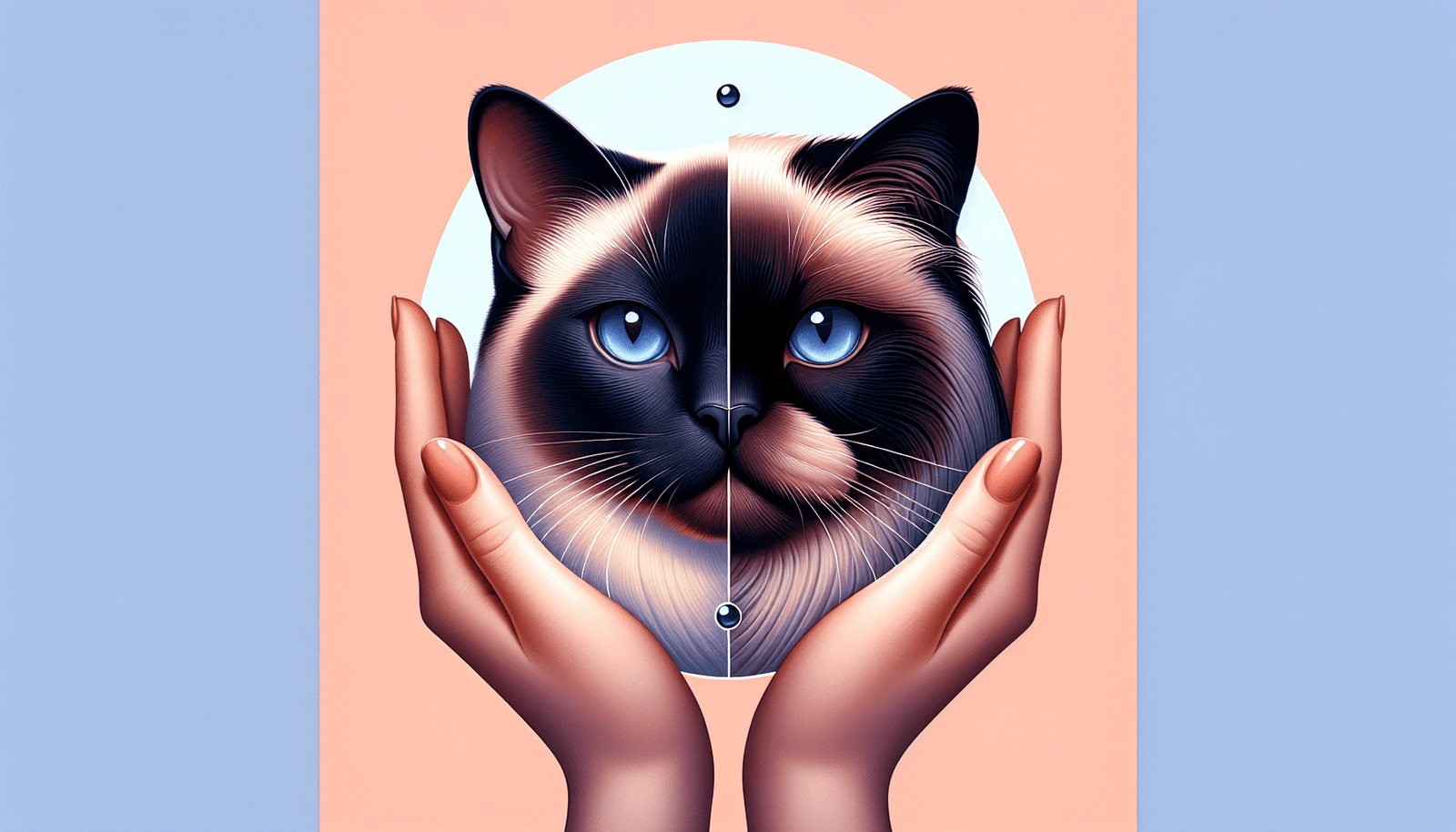If you’ve ever wondered about the striking differences between Siamese cats and Persian cats, you’re in for a treat! Get ready to be captivated by a visual journey that showcases the unique characteristics of these two feline breeds. From their distinctive appearances to their stunning coat colors, prepare to be amazed by the beauty that these delightful creatures possess. So grab your popcorn and get ready to explore the enchanting world of Siamese and Persian cats through mesmerizing photographs that illustrate just how remarkable these cats truly are.

Physical Appearance
Body Structure
Both Siamese and Persian cats have distinct body structures, but they differ significantly from each other. Siamese cats have a sleek and muscular build with a long and slender body. They are known for their graceful and agile movements. On the other hand, Persian cats have a more round and stocky body structure, appearing compact and sturdy. Their bodies are known for their thick, plush coat, which adds to their overall appearance of elegance.
Coat and Colors
When it comes to coat and colors, Siamese and Persian cats showcase remarkable differences. Siamese cats have short, smooth coats that lie close to their bodies. They have a beautiful color-point pattern, where their bodies are lighter in color, and their extremities, such as the ears, paws, and tail, are darker. This contrast adds to their striking appearance. Persian cats, on the other hand, have long, fluffy coats that require regular grooming to prevent matting. Their coats come in various colors and patterns, including solid, tabby, tortoiseshell, and more. The Persian breed is famous for its luxurious, flowing coat that exudes elegance.
Facial Features
Head Shape
The head shape of Siamese and Persian cats is another noticeable difference between the two breeds. Siamese cats have a more triangular head shape, with a longer snout and large, wide-set ears. Their faces are proportionate to their bodies, giving them a sleek and sophisticated look. In contrast, Persian cats have a round, doll-like face shape, with a short nose and small, round ears. Their facial features contribute to their adorable and sweet appearance, often described as “baby doll-like.”
Eyes
The eyes of Siamese and Persian cats also differ significantly. Siamese cats boast stunning almond-shaped eyes, which are typically a striking blue color. Their eyes are expressive and convey intelligence and curiosity. Persian cats have large, round eyes with various color options, including blue, green, copper, or odd-eyed (one eye of each color). Their eyes are captivating and give them a soft, gentle expression that complements their overall appearance.
Nose
In terms of nose shape, Siamese and Persian cats showcase contrasting features. Siamese cats have a straight and long nose, which fits well with their triangular head shape. Meanwhile, Persian cats have a short, stubby nose that adds to their cute and distinctive facial appearance.
Size and Weight
Siamese Cat
Siamese cats are medium-sized cats, with males typically weighing between 8-12 pounds (3.6-5.4 kg) and females weighing slightly less, around 6-8 pounds (2.7-3.6 kg). They have a slim build and a lithe physique, showcasing their agility and athleticism.
Persian Cat
Persian cats, on the other hand, are larger in size compared to Siamese cats. Males can weigh between 9-14 pounds (4-6.4 kg), while females can weigh between 7-11 pounds (3.2-5 kg). Their stocky build and thick coat contribute to their overall weight and give them a more robust appearance.
Personality Traits
Activity Level
Siamese cats are known for their high activity levels. They are energetic and playful, often engaging their owners in interactive games. Siamese cats enjoy exploring their surroundings and are fond of climbing and jumping. On the other hand, Persian cats have a more laid-back approach to life. They are generally calm and reserved, preferring a cozy spot for lounging and observing their surroundings.
Temperament
When it comes to temperament, Siamese cats are known for being vocal and social. They love to communicate with their owners through various vocalizations, often referred to as “talking cats.” Siamese cats are also highly intelligent, curious, and affectionate, forming strong bonds with their families. Persian cats, on the other hand, are renowned for their gentle and serene nature. They are known to be calm, docile, and enjoy a relaxed lifestyle. Persian cats cherish their quiet time and appreciate a peaceful environment.
Social Interaction
Both Siamese and Persian cats enjoy social interaction, but they exhibit different preferences. Siamese cats thrive on human companionship and love being the center of attention. They enjoy being involved in the activities of their families and are known to be quite extroverted. Persian cats, on the other hand, are more independent and may prefer a quieter environment. While they do appreciate attention and affection, they are also content spending time alone and can entertain themselves with their toys or simply observing their surroundings.

Grooming Needs
Brushing
Grooming needs are crucial to consider when deciding between a Siamese or Persian cat. Siamese cats have short coats that require minimal grooming. Brushing them once a week is usually sufficient to remove loose hair and keep their coat shiny and smooth. Persian cats, on the other hand, have long, luxurious coats that need regular brushing to prevent tangles and matting. Daily brushing is recommended for Persian cats to maintain the health and beauty of their coat.
Bathing
Both Siamese and Persian cats benefit from regular bathing, although their bathing needs differ. Siamese cats typically have less oil in their coat, which means they do not require frequent baths. Bathing them every 4-6 weeks or as needed is usually sufficient. Persian cats, with their thicker coats, are prone to matting and require more frequent baths. It is recommended to bathe them every 2-4 weeks to keep their coat clean and prevent matting.
Hairballs
Hairballs are a common issue that cat owners encounter, but they can vary depending on the breed. Siamese cats have short hair, which means they are less likely to develop hairballs. However, regular brushing can help prevent excessive shedding and the ingestion of loose fur. Persian cats, with their long hair, are more prone to hairballs. Regular grooming and brushing are essential to minimize the ingestion of loose fur and reduce the occurrence of hairballs in Persian cats.
Health Considerations
Common Health Issues
Both Siamese and Persian cats can be prone to specific health issues, so it’s important to stay informed. Siamese cats are generally healthy and have a longer lifespan compared to other breeds. However, they may be susceptible to conditions such as dental issues, respiratory problems, and certain genetic disorders affecting the eyes, such as progressive retinal atrophy (PRA) or strabismus (crossed eyes). Persian cats are known for their brachycephalic (flat-faced) features, which can lead to health complications. They are more prone to respiratory issues, ocular conditions like tear duct problems, polycystic kidney disease (PKD), and dental problems.
Lifespan
Siamese cats have an average lifespan of 12-15 years. With proper care, some Siamese cats may live into their late teens or early twenties. On the other hand, Persian cats have a slightly shorter average lifespan, typically living between 10-15 years. However, many Persian cats also live well into their senior years with proper veterinary care and a healthy lifestyle.
Training and Intelligence
Trainability
Both Siamese and Persian cats are intelligent and can be trained, but their willingness to learn and respond may differ. Siamese cats are highly intelligent, curious, and eager to please their owners. They can be trained to perform tricks, use a litter box, and even walk on a leash. Persian cats, while intelligent, have a more independent streak. They may require more patience and gentle training methods. However, with consistency and positive reinforcement, Persian cats can also learn basic commands and behaviors.
Problem-solving Skills
Siamese cats are known for their problem-solving skills. They are naturally curious and possess a high intelligence level, allowing them to figure out puzzles and challenges. Siamese cats enjoy interactive toys that stimulate their mental abilities. Persian cats, while intelligent in their own right, may not possess the same level of problem-solving skills as Siamese cats. They enjoy a more laid-back lifestyle and may not actively seek out mentally stimulating activities.
Lifestyle Compatibility
Apartment Living
Both Siamese and Persian cats can adapt well to apartment living. Siamese cats’ high activity level and need for mental stimulation make them well-suited for apartment life, as long as they have plenty of toys and vertical spaces to explore. Persian cats, with their more relaxed nature, also thrive in apartments, as long as they have a cozy corner or window perch to observe the world from. Regular playtime and environmental enrichment are essential for both breeds regardless of the living situation.
Children and Other Pets
When it comes to compatibility with children and other pets, both Siamese and Persian cats have their unique traits. Siamese cats are known to be sociable and affectionate, making them ideal companions for children. They enjoy interactive play and can form strong bonds with people of all ages. Persian cats, with their gentle and calm nature, also get along well with children. However, it is important to supervise interactions and teach children to handle them gently due to their long fur. Both breeds can also coexist with other pets, although careful introductions and gradual acclimations are recommended to ensure positive relationships.
Popularity and History
Siamese Cat
The Siamese cat is one of the oldest and most recognizable cat breeds, with a rich history dating back centuries. Originating from Thailand (formerly Siam), Siamese cats were sacred and revered in the past. They made their way to Europe and America in the late 19th century, quickly gaining popularity for their distinctive appearance and engaging personalities. Siamese cats remain highly popular today, appreciated for their striking features and friendly demeanor.
Persian Cat
Persian cats, also known as Longhair cats, have a fascinating history that traces back to ancient Persia (modern-day Iran). They were prized for their luxurious coats and regal appearance. Persian cats were introduced to Europe in the 17th century and gained significant popularity over time, particularly during the Victorian era. Their enchanting beauty and calm nature continue to captivate cat lovers around the world, making them one of the most beloved and recognized breeds.
Conclusion
Choosing the Right Breed
When considering a Siamese or Persian cat, it is essential to assess your lifestyle and preferences. If you are looking for an active, talkative, and social companion, the Siamese cat may be the perfect fit. Their slim build, striking looks, and high energy levels make them an excellent choice for those seeking an interactive and engaging feline friend. On the other hand, if you prefer a calm, gentle, and laid-back companion, the Persian cat could be the ideal match. Their luxuriously thick coat, sweet expression, and serene nature make them a wonderful choice for those who appreciate a relaxing and tranquil atmosphere.
Appreciating the Differences
While Siamese and Persian cats have distinct differences in terms of physical appearance, personality traits, and care needs, both breeds offer unique qualities and the potential for a lifelong bond. Whether you lean towards the elegant sleekness of the Siamese or the soft and fluffy charm of the Persian, both breeds have their own allure and provide a delightful companionship experience. Ultimately, the choice between a Siamese and Persian cat comes down to personal preference, ensuring that you find the perfect feline companion to enrich your life with love, joy, and endless affection.

